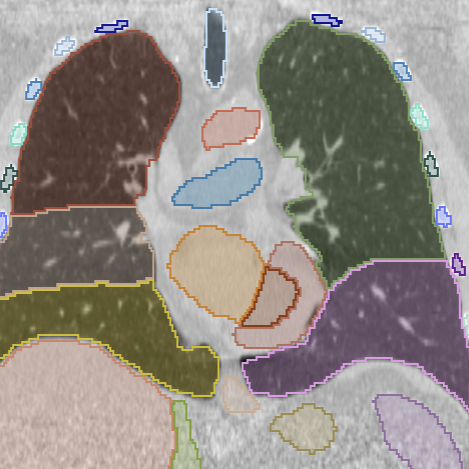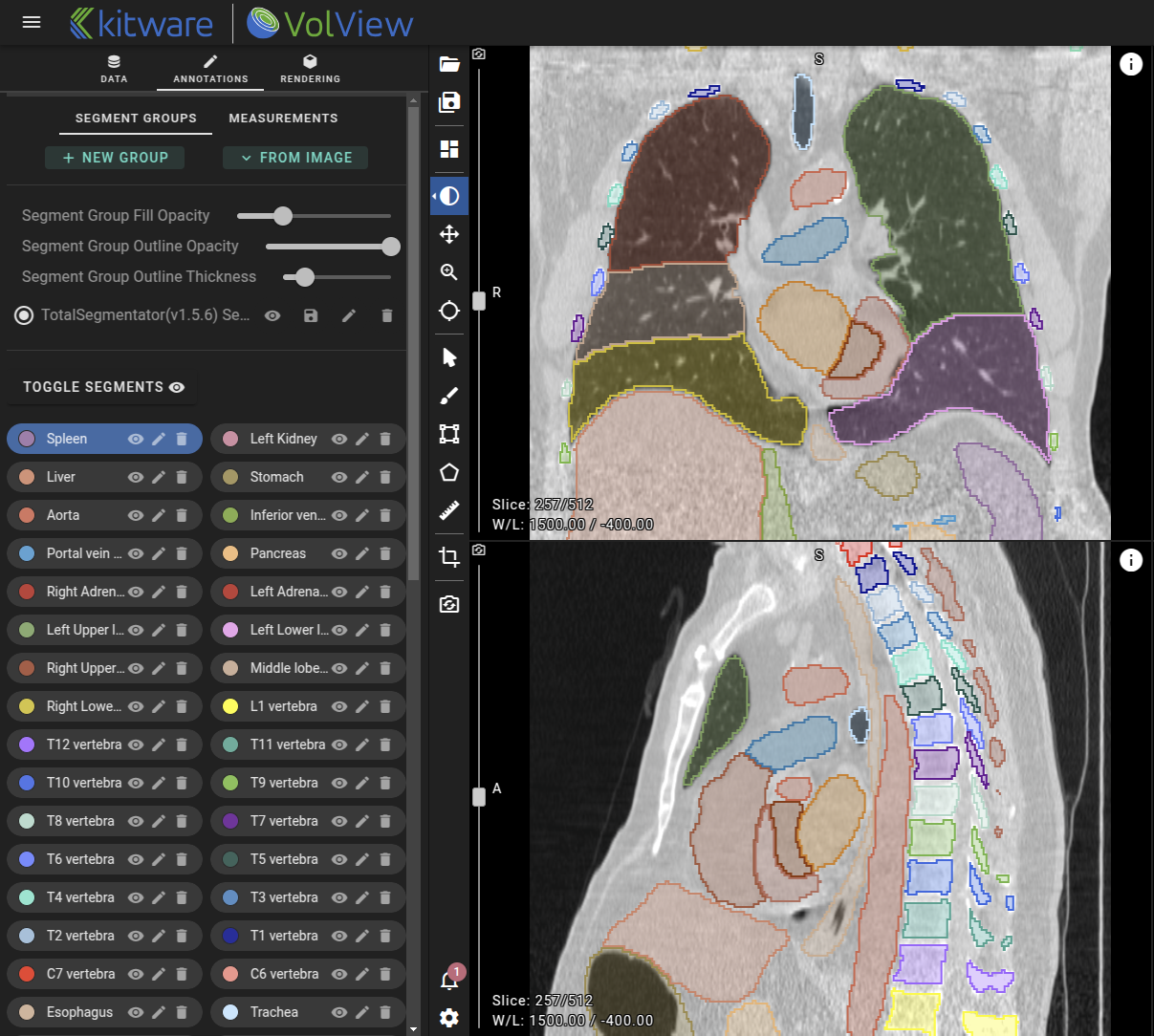VolView 4.3 Release

We are excited to announce the 4.3 VolView release, which brings new annotation, segmentation, and VolView customization features. Try the completely client-side live deployment now!
VolView is an open source permissively licensed radiological viewer developed for clinical professionals and researchers. With VolView, you can have a deeper visual understanding of your data through interactive, cinematic volume rendering and easily visualize your DICOM data in 3D. Since VolView runs in your browser, you don’t need to install any software and your data stays securely on your machine by default.
VolView is one of several open-source visualization tools offered by Kitware. To learn more about the technologies that underpin VolView, check out vtk.js for web-based visualization and itk-wasm for image I/O and processing capabilities. These tools are used in 3D Slicer, ParaView, Glance OHIF, Osirix, and more, and we can help you use them in your products and processes. For more information, please contact us.
Polygon Annotations get Merging and Freehand Drawing
VolView’s polygon tool has two new features: freehand drawing and polygon merging!
The freehand drawing mode allows for quicker tracing of more complex segmentation boundaries, while allowing for control point-based editing as a follow-up. This mode is enabled by default, and works in tandem with the control points mode of operation. Clicking will add control points, while holding down the left mouse button while dragging will let you freehand draw.
Polygon merging now makes it possible to union several overlapping polygons together. This is handy in situations where a complex segmentation is done in pieces, such as gradually growing a segmentation with overlapping freehand segments. To merge polygons, use the Select tool, Shift-Click to select multiple overlapping polygons, right click on a selected polygon and click “Merge Polygons”. If you hold down shift while finishing a polygon, it will automatically merge with overlapping polygons.
Segmentation Visualization and Editing
AI models often output segmentation images. VolView added:
- Loading of labels and colors in DICOM SEG files
- Loading overlapping DICOM SEG segmentations
- Converting labelmap volumes into segment groups
- Segment outline and fill visualization

When importing DICOM SEG, VolView will now read the segmentation labels and colors from the DICOM tags. If the DICOM SEG volume has overlapping segments, VolView will create more segment groups. So now overlapping segmentations are visualized at the same time.
Certain tools, such as 3D Slicer, can export segmentations as 3D volumetric images. Before, loading these images would simply render these images as grayscale images. VolView now supports converting any loaded image into a segmentation, inferring segments from labelmap values inside the image.
To better improve visualizing multiple overlapping segmentations, VolView now has controls for changing the fill opacity and outline thickness for each segment of a segmentation. This visualization improvement helps users discern the structure of several overlapping segmentations without resorting to workarounds such as toggling segment visibility.
View a DICOM CT and SEG hosted by the Imaging Data Commons.
Custom Application Accelerators
VolView isn’t just a static viewer. The open aspect of the project means it can be tailored to specific needs and use-cases. That’s why we’ve released the VolView Custom App Template. It’s a minimal cookie-cutter project designed to allow developers to build on top of the VolView codebase in a fine-grained manner. Additionally, it’s designed to avoid conflicts when upgrading VolView, favoring developer changes over core VolView changes. To learn more, check out the GitHub repo here: https://github.com/KitwareMedical/VolViewCustomAppTemplate
VolView’s runtime customization JSON also has received several new features.
- View layouts can now be defined with the “layout” key.
- Keyboard shortcuts to activate tools
- The file type for exported segment groups via the “Export State” feature can now be customized with the “
io.segmentGroupSaveFormat” key. - Default annotation tool labels can now be defined in the “
labels” key. The “labels.defaultLabels” key will apply to all annotation tools.
To learn more about VolView’s runtime customization file format, check out the documentation: https://kitware.github.io/VolView/configuration_file.html.
VolView Customization Examples
Want to see how others are customizing VolView to meet their specific visualization and workflow needs? Below is a list of applications built on top of VolView, tailored to their particular visualization and workflows.
- Dental View: VolView for dental implant planification.
- X-Ray Genius: Synthetic X-ray Image Generation.
- Lung air: AI-based Bronchopulmonary Dysplasia risk analysis.
Get Help Started
Want to learn more about how VolView can help you with your next medical image visualization project? Want help with building out a customized version of VolView, tailored to your needs? Whatever your interests are, contact us to learn more about what we can do for you.